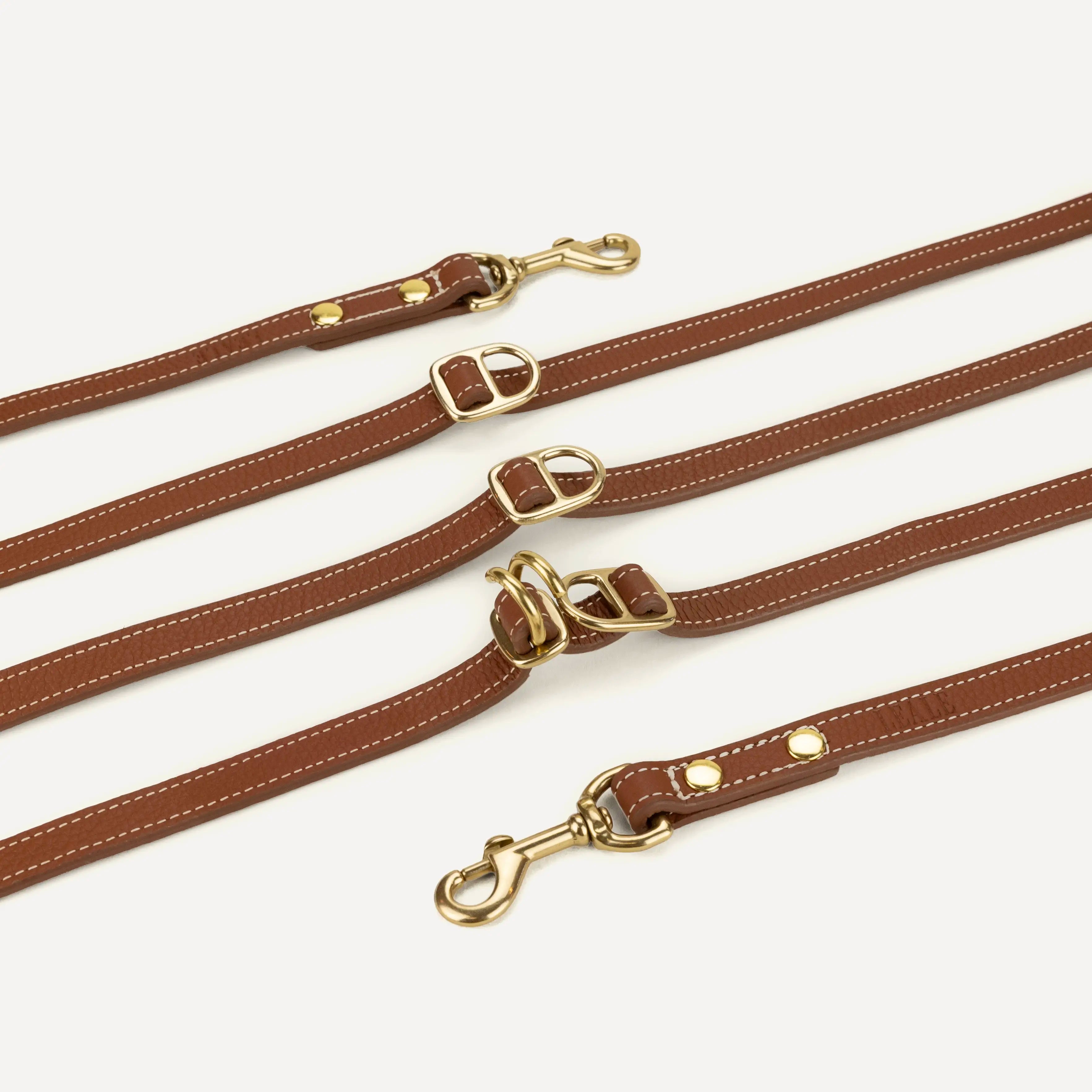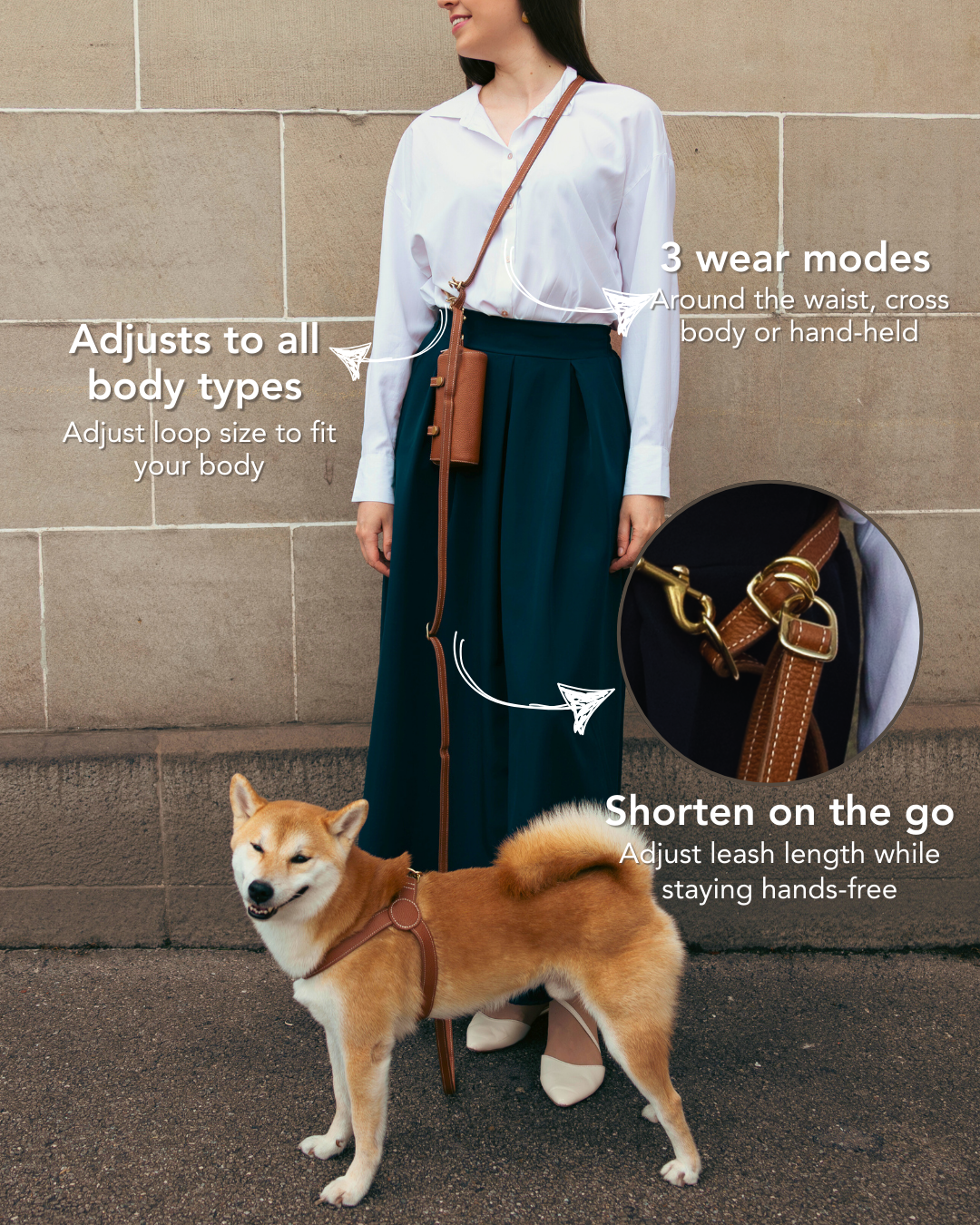
Why do vets not recommend retractable leashes?
Retractable leashes seem like a great idea, offering dogs more freedom to explore while still keeping them connected to their owners. But many veterinarians, trainers and dog behaviorists advise against using them. Why? The concerns range from safety risks to reinforcing bad behavior.
If you're looking for a retractable leash, it’s crucial to understand how they work and for which types of dogs they might be suitable. Let's look into common conerns and how to address them to make sure you pick the right leash for you and your pup.
Common problems with retractable leashes
1. Increased risk of injury to dogs and owners
One of the biggest issues with retractable leashes is that they can cause injuries:
- Friction burns & lacerations – The thin cord of many retractable leashes can cause burns or cuts if it wraps around a person’s leg, another dog, or even the owner’s hand when trying to regain control.
- Neck & spinal injuries – If a dog reaches the end of the leash at full speed, they experience a sudden, harsh jerk to the neck. This can lead to spinal injuries, trachea damage (especially in small breeds), or even whiplash.
- Dropped handles & startled dogs – Unlike a traditional leash, retractable leashes use bulky plastic handles. If dropped, they can startle a dog into running, causing panic as the handle “chases” them down the street.
2. Encouraging pulling & poor leash behavior
Veterinarians and trainers emphasize that retractable leashes teach dogs to pull. Why? Because they reward dogs with more length whenever they apply tension. Instead of learning to walk calmly beside their owner, dogs get used to constant resistance, reinforcing the habit of pulling.
If you're looking for a leash for pullers, a retractable option might worsen leash manners rather than improve them.
3. Failure of the locking mechanism
Many retractable leashes rely on a small plastic locking mechanism to control length. Over time, these mechanisms wear out, meaning that at any moment, a dog could pull forward, and the leash could fail to stop them.
For large, strong dogs or reactive pups, this poses a serious safety issue. Once the lock breaks, the dog gains full freedom, making it impossible to regain control in an emergency.
4. Danger in high-traffic & crowded areas
A retractable leash might sound like a great solution for walks, but the problem arises when dogs get too much distance from their owner.
- Dogs darting into traffic – Without immediate control, a dog can sprint into the road before an owner even has time to react.
- Entanglement hazards – A long leash can trip pedestrians, cyclists, or other dogs, leading to accidents or even fights.
- Uncontrolled greetings & dog fights – Dogs on retractable leashes often reach another dog before their owner can assess whether the interaction is safe. If the other dog is reactive or aggressive, it’s too late to pull back.
5. Limited control in emergency situations
When faced with sudden situations like another dog lunging, a squirrel running across the street, or a loud noise startling your pup, a retractable leash delays your reaction time. By the time you hit the lock button, your dog may already be in danger.
The Effortless leash: A smarter alternative to retractable leashes
We understand the appeal of retractable leashes - you want your dog to have some freedom while still keeping them on a leash. That’s why we designed the Effortless leash as an alternative to traditional hand-held or retractable leashes, to offer the best of both worlds:
✅ Functions as a regular leash – Unlike standard retractable leashes, our design lets you keep full control at all times.
✅ Adjustable for high-traffic areas – When needed, you can shorten it instantly, making it perfect for city walks, busy parks, or navigating tight spaces.
✅ Hands-free but controllable – The integrated belt and shortening function provides perfect body fit and comfort without sacrificing control, making it ideal for hikes, running, or everyday use.
If you’re looking for a retractable hands-free leash but want something safer, smarter, and more functional, the Effortless Leash is the perfect solution.
Final thoughts
Veterinarians don’t recommend retractable leashes because of injury risks, poor training reinforcement, and a lack of control in high-stakes situations. However, not all hands-free leashes are created equal.
The Effortless Leash gives you the freedom of movement without the dangers of a traditional retractable leash. Whether you need a hands-free leash for pullers, a hands-free leash with an integrated belt, or something that adapts to both busy city streets and open trails, the Effortless Leash is designed to do it all.





